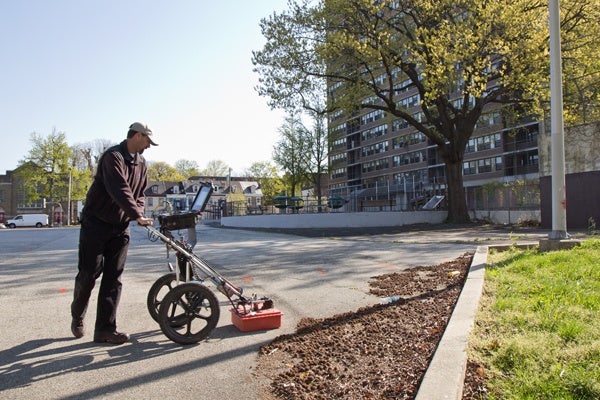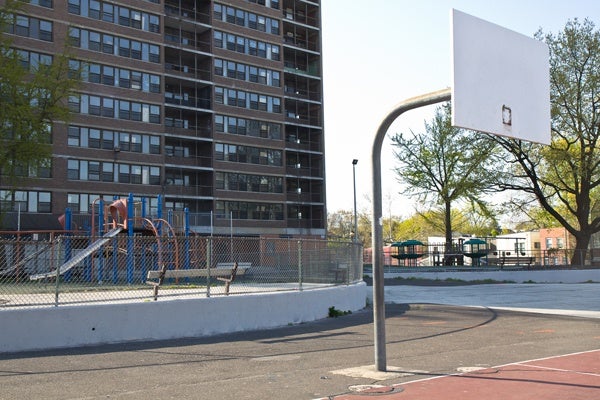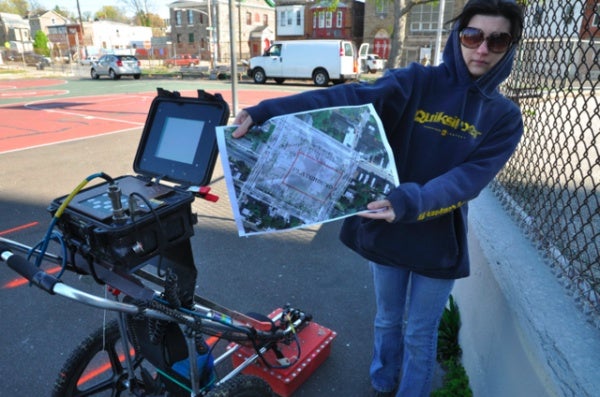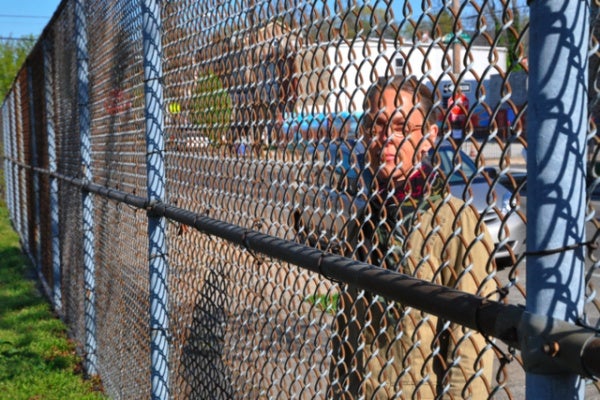Underground search of the Potter’s Field in Germantown commences
William Steinhart pointed to a screen which resembled an Etch-A-Sketch. The image on it makes the soil beneath his feet in Germantown look like a layered cake.
In reality, what the project manager for Lancaster-based geophysics company Enviroscan is drawing attention to is a vertical slice created by reading electromagnetic waves that bounced back to an antenna on the machine Steinhart is holding.
One curved line may have been a pipe leading to a manhole. Vertical slashes and soil depressions could represent burial locations.
“It’s like 80 percent science and 20 percent art,” he said as the search for relics and remains buried at the historic Potter’s Field near West Queen Lane and Pulaski Avenue commenced Tuesday morning.
“It’s only a screen with a bunch of different colored ribbons going by,” he continued. “Sometimes, you’ve got to be able to be a bit of an artist to figure out what’s going on.”
The search begins
Commissioned by the Philadelphia Housing Authority, Enviroscan is trying to determine the true boundary lines of Potter’s Field, an African American burial ground which, according to the Philadelphia Preservation Alliance, was created in 1755 for “all strangers, Negroes, and Mulattoes as die in any part of Germantown forever.”
The site, which is currently fenced off to the public, contains the Wissahickon Playground and a PHA high-rise apartment building slated for demolition.
Community opposition to the project sparked PHA’s interest in preserving the historic space. Ground-penetrating radar is the first step.
Neighbors watch from beyond the fence
Despite a sharp wind, curiosity led a handful of Germantown residents to linger by the construction gate within the first hour of work on Tuesday morning to chat with the workers.
Catherine Adams, who lives just three blocks away, leaned in close to the fence to ask the site archeologists questions about their process. She said it doesn’t matter to her if bodies were discovered.
“Whether whole graves are found or not is sort of a moot point because what happened here is sacred and what they’re doing, the process that they’re following, is very respectful of that,” she said.
Other long-time residents, like amateur historian and Germantown Historical Society member Hal Sawyer, said they don’t think individual graves will be pinpointed. He’s been pouring over historical documents including blueprints of the Queen Lane Apartments complex, along with old geographical maps of the land.
“This level change here seems to be artificial,” he said, pointing to the two-foot cement wall that raises the upper playground above the original ground line. “According to Pulaski town residents, they say that’s where a lot of the human remains got shoved … but you’ll find it if you dig, you won’t find it with radar.”
Sawyer maintained the high-rise construction shuffled the bodies, estimating there are hundreds of loose bones buried in the soil.
What happens next?
The ground-penetrating radar machine, valued at more than $20,000, detects differences between objects underground with different electromagnetic reactions. With bones, the differences are much more subtle.
The device creates a new file for each slice of the ground puzzle. A software program puts together the pieces inside the grid to reveal objects underground.
“We’re just barely into what’s considered the Potter’s Field. I was seeing building foundations along there,” he said.
He took that as a good sign, potentially indicating that the soil hasn’t been moved very far, so original grave sites might be intact while residents have brought him stories about bones found in the basements of former residences on the block.
However, Steinart had yet to make any major discoveries on Tuesday; data collection will only take two days, but the compiling process may take up to a month.
“A couple little disturbances here or there,” he said, “but nothing really exciting yet.”
WHYY is your source for fact-based, in-depth journalism and information. As a nonprofit organization, we rely on financial support from readers like you. Please give today.








